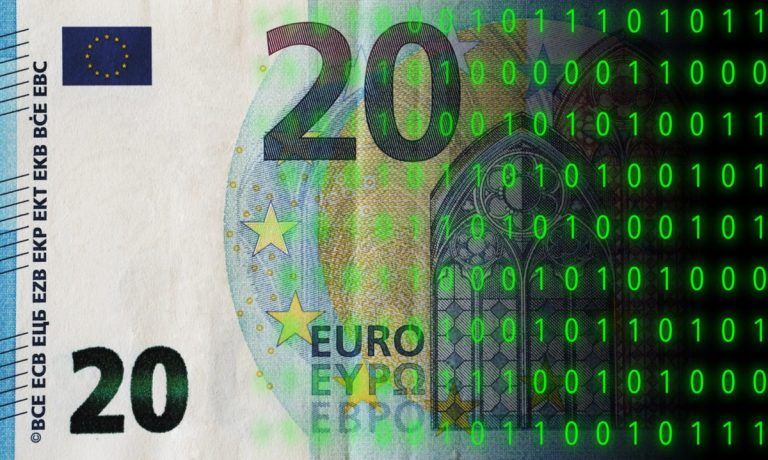Central Banks Pursue CBDCs in 2023 but Diverge on Design

Central banks around the world have diverged in the design of CBDCs.
As the investigation phase of the European Central Bank’s (ECB) digital euro project moves into technical considerations, the question of which path it will follow arises.
Will the digital euro look like China’s digital yuan? Or perhaps it will more closely resemble Nigeria’s eNaira?
Giving some clues as to its current thinking, the ECB recently published a progress report on its central bank digital currency (CBDC) investigation.
The latest report details design and distribution options that were recently endorsed by the project’s governing council, including the role of intermediaries.
It writes that “supervised intermediaries,” including credit institutions, banks and other payment service providers “would be responsible for all end user-facing roles in the digital euro ecosystem.”
To summarize, the ECB said initiation, authentication, validation and post-settlement activities, would be managed by wallet issuers, while the Eurosystem will perform the settlement of transactions.
In that respect, the digital euro is likely to follow a path laid out by existing CBDCs.
Intermediaries and China’s Digital Yuan
Like the proposed digital euro, China’s digital yuan erects a two-tier system that delegates responsibility for issuing and funding wallets to a select list of intermediaries, currently consisting of seven traditional banks as well as WeBank and MyBank, which operate WeChat Pay and AliPay, respectively.
Intermediaries are responsible for issuing digital yuan and maintaining users’ digital wallets. And although the digital yuan functions as a direct claim on the People’s Bank of China (PBC), end-users primarily interact with intermediaries. However, at the moment, intermediaries must hold 100% reserves at the PBC, which is responsible for the final clearing of transactions.
While for many consumers, the user experience of the digital yuan differs very little from existing digital wallets, the PBC has posited it as a more secure and private alternative with some cash-like qualities.
In October, PBC Governor Yi Gang said the digital currency had “managed anonymity,” signaling that transaction data is secured and encrypted so that sensitive consumer information is not identifiable without legal authorization.
Comparing the digital yuan with the proposed digital euro, the PBC’s two-tier infrastructure and managed anonymity have echoes in the ECBs plans.
In its latest progress report, the central bank said that the Eurosystem would neither be able to infer how many digital euros any individual end user held nor infer end users’ payment patterns. “The digital euro would be designed so that it minimized Eurosystem involvement in the processing of user data,” the report states.
It adds that full anonymity is not considered a viable option due to the risk of money laundering and the financing of terrorism, but holds open the possibility that the digital euro could “replicate some cash-like features and enable greater privacy for low-value/low-risk payments.”
Centralization vs Decentralization Debate
The ECB’s suggestion that it could apply different rules for different types of transactions is similar to the approach being pursued by the Central Bank of Nigeria, which has implemented tiered know your customer (KYC) requirements for eNaira transactions depending on the risks posed.
Related: Nigeria Cuts ATM Cash Withdrawals and Urges eNaira Use
According to a November report on CBDCs in Africa published by the Bank for International Settlements (BIS), individual and merchant eNaira wallets “have different caps on daily transaction limits and the amount of eNaira that can be held in them, depending on their customer due diligence tier.”
It adds that while wallets with lower caps can be held by people who don’t have a bank account, a bank account is necessary to hold a wallet with a higher cap.
While the CBN is clearly concerned with preventing people from creating fully anonymized wallets, in other respects the eNaira system is more similar to digital currencies like stablecoins, which are more amenable to anonymous transactions.
Like most cryptocurrencies, eNaira payments are recorded on a blockchain and the ledger of transactions is distributed across multiple decentralized servers.
On the other hand, digital yuan transactions are not recorded on a blockchain, and the PBC retains full access to transaction data and can theoretically even cancel or revert transactions.
Currently, the ECB has yet to decide whether it will follow the eNaira’s blockchain-based path or the digital yuan’s more centralized one.
Outlining three options it is considering for digital euro transaction validation, the ECB said it has concluded that a peer-to-peer solution should be developed for offline transactions.
However, the jury is still out on whether a peer-to-peer system for validating online transactions is viable, or whether an approach similar to existing digital payment solutions in which an authorized third party is responsible for validation would be a better alternative.
For all PYMNTS EMEA coverage, subscribe to the daily EMEA Newsletter.